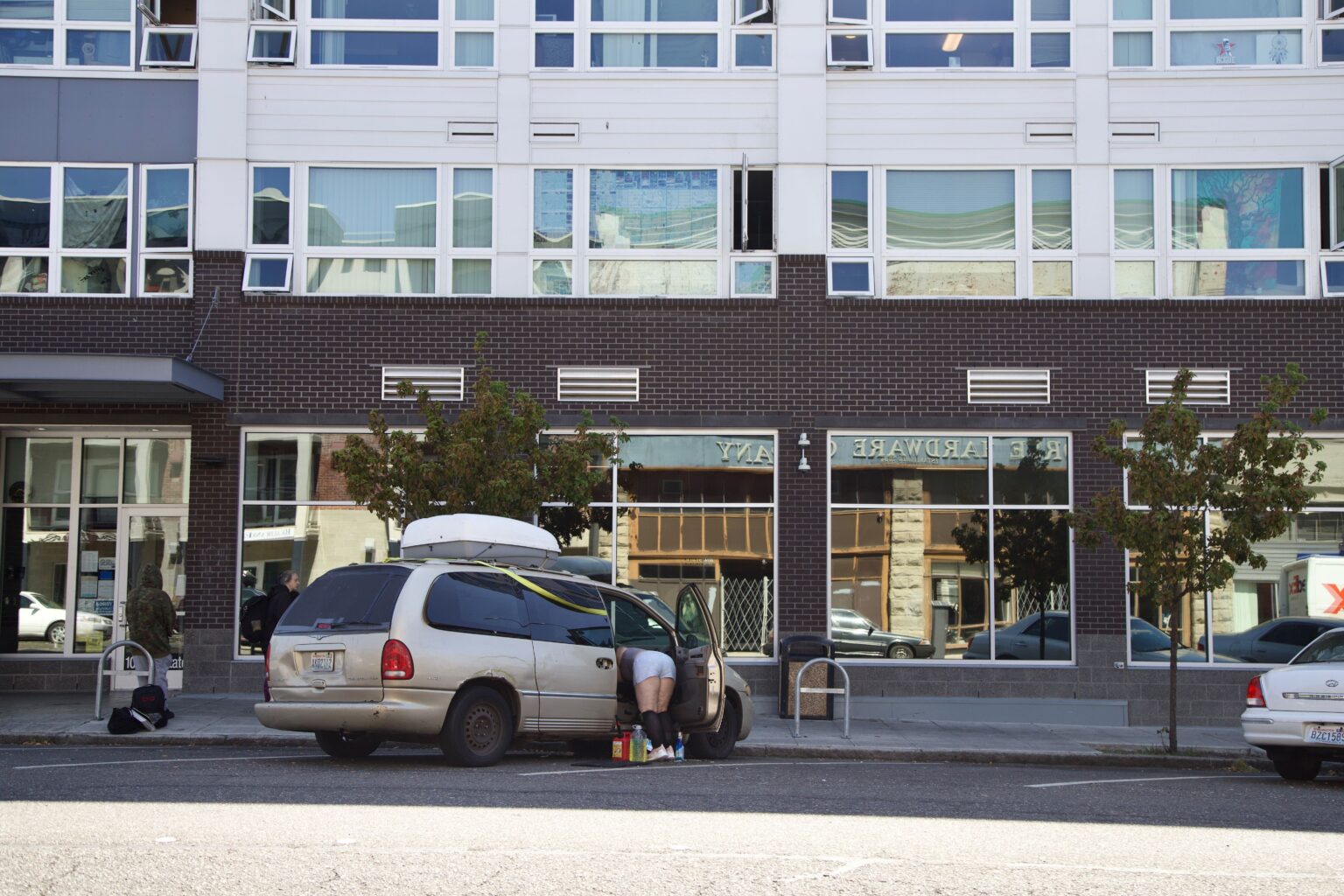Some government leaders and neighbors remain frustrated over crime and other problems at 22 North, but the facility’s managers report early gains as they work to improve conditions both inside and outside the homeless housing facility in downtown Bellingham.
Over the past couple weeks, neighbors have routinely captured videos of drug sales and use, assaults and emergency responses outside the 40-unit apartment building at 1022 N. State St. At least one Whatcom County Council member has declared 22 North a failure and voted against giving money to the Opportunity Council for continued operation of the building.
“Throwing more good money after bad money is just a really bad investment strategy, period,” council member Tyler Byrd said June 21, before voting against a $242,648 funding package to add staffing and cover some expenses at 22 North. County officials decided to limit this support to six months rather than the usual full year, to hold the Opportunity Council more accountable and give it a chance to show improvement at the troubled facility. The funding was approved in a 5–2 vote.
Staffing at 22 North has been a big part of the problem.
High turnover and a broader workforce shortage has left 22 North chronically short-staffed since the start of the COVID-19 pandemic. The facility has 14 front desk positions to fill shifts 24 hours a day but had been working with a crew of only seven, Opportunity Council Housing Development and Operations Manager Adrienne Solenberger said. Five of the vacant positions have since been filled, and 22 North also hired two more case managers to help reduce the excessive caseload carried by existing staff.
Opportunity Council established stricter rules for tenants and guests on June 1. Since requiring guests to show photo identification and undergo background checks, about half have been denied entry, Opportunity Council officials say. Admissions of new residents are on hold until the end of July as the agency re-evaluates whom it can accept.
Two residents have been evicted and five others have entered the sometimes lengthy legal eviction process, Solenberger said. The agency is trying to negotiate mutual terminations with these tenants, to speed up the process and ensure they don’t have a formal eviction on their housing record.
While some neighbors remain irate over the activity they see outside 22 North, others have reported that the block has gotten noticeably quieter, according to meeting minutes from a task force that started gathering last month. The group, composed of neighbors, Opportunity Council staff and Bellingham city officials, reported that the streets have seemed calmer during business hours. Unwanted activity continues at night and on weekends.
Opportunity Council Executive Director Greg Winter said the agency is willing “to pull out all the stops” to further reduce problems outside its building. The agency is looking into playing certain sound frequencies or using particular kinds of lighting outside 22 North to discourage loitering.
Northwest Youth Services, which provides services to half of 22 North’s residents and has an office next door, may fence off a portion of its parking lot where drug deals are routine. The city and Opportunity Council also are looking into fencing the lot on the other side of 22 North, at Chuck’s Midtown Motors, to deter the frequent foot traffic and drug use there. The original idea of a fence topped with razor wire is off the table because the city won’t allow razor wire downtown, according to task force minutes.
Don Almer, chief deputy of the Bellingham Police Department, said neighbors tell police the situation outside 22 North has not improved. Some neighbors have heightened their vigilance recently, shooting videos of crimes in progress and sending them to police and government officials almost daily.
Almer said police responded to 139 calls at 22 North in the 49 days since the stricter rules went into effect there on June 1. That’s more than the 119 calls to 1022 N. State St. in the previous 61 days, during April and May.
“Part of that is because neighbors are reporting more,” Almer said.
Some neighbors say the low-barrier housing model practiced at 22 North is broken. Residents at 22 North have too much independence, they say, and the tenants should have more structure and support imposed upon them. Solenberger still believes permanent supportive housing works.
“It’s not a failed model,” she said.
She noted that such facilities typically take 18 months to two years to establish a stable routine. But a year and a half after 22 North opened, in late 2018, the COVID-19 pandemic interrupted some social services for homeless people.
“Now we’re reopening and re-stabilizing,” Solenberger said. “It’s going to take a period of time.”
One part of the solution, Solenberger added, may be to set the bar higher for incoming tenants.
“[22 North] was meant to serve the folks on the far end of the spectrum, people who most likely would be served nowhere else in the community,” Solenberger said.
As staffers at 22 North prepare to accept new tenant referrals in August, they will be looking a little further up that spectrum of need.
The idea, Solenberger said, is to bring in people who are able to use the help available to them.




